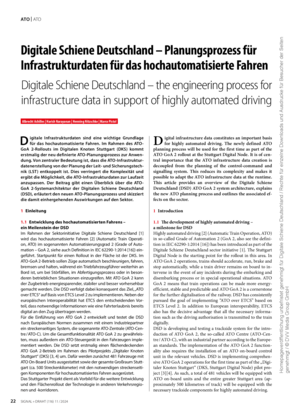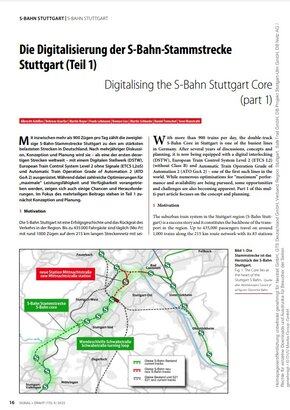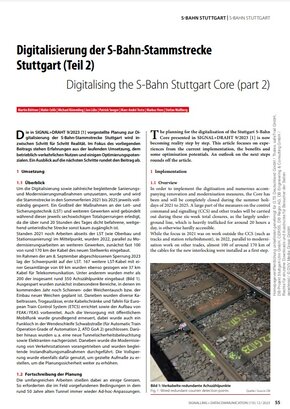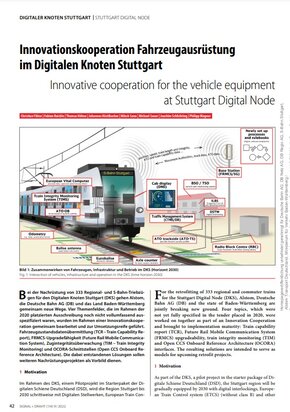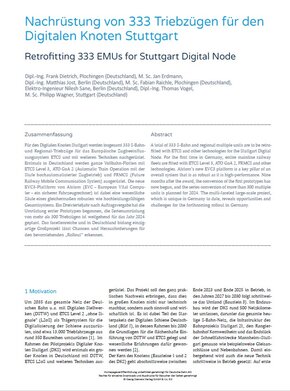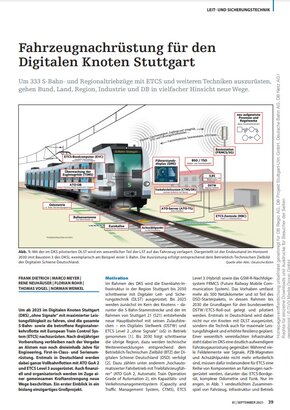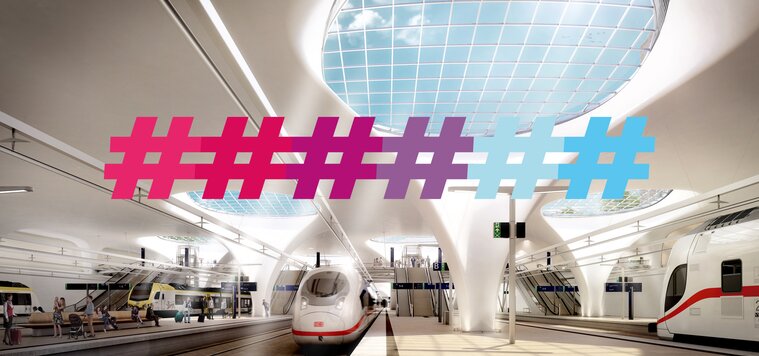
Highly automated driving in the Stuttgart area
The pilot project "Highly automated driving in the Stuttgart area" (ATO GoA2) is being realised in the Digital Node Stuttgart (DKS) for S-Bahn and regional transport. The use of new technologies enables highly automated driving in an open system. This will improve operational quality, achieve better energy efficiency and increase route and transport capacity in the future.
Project Duration
Our Partners


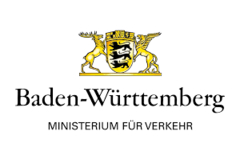
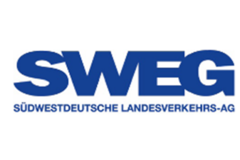
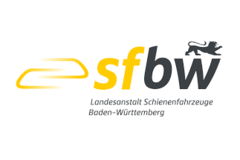
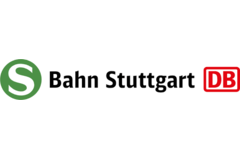



The pilot project "Highly automated driving in the Stuttgart area" (ATO GoA2) is being realised in the Digital Node Stuttgart (DKS) for S-Bahn and regional transport. The use of new technologies enables highly automated driving in an open system. This will improve operational quality, achieve better energy efficiency and increase route and transport capacity in the future.
The train is controlled by the ATO on-board unit in the train, which receives exact ATO track information from the ATO Centre. This is how ATO enables automated start of driving, the driving itself and stopping. This leads to an optimized driving and later braking than in manual operation. As a result, energy is saved, and route capacity is used optimally. In the event of delays, the maximum driving reserves can be utilized. ATO operation is activated by the driver, who remains on board in ATO GoA2 operation.
The pilot project is based on equipping the line and vehicles with ETCS Level 2. Highly automated driving in the Stuttgart area is the pilot project for the rollout of this pioneering technology across the entire rail network.
The ATO GoA2 overall functionality acts like a kind of remote cruise control: The track tells the train when it should be at which location via so-called timing points. The trackside ATO system (ATO centre) consists of several components that provide the on-board system with journey profiles and segment profiles, among other things.
The on-board ATO system (ATO-OB) can then use this information to determine optimum journey profiles. These journey profiles are executed as soon as the on-board ETCS provides a movement authority and ATO GoA2 has been activated by the train driver. The driving profile provided by the ATO centre enables timetables to be adhered to more precisely, thus reducing delays.
Train drivers always retain responsibility for safety: they are on board, monitor the journey, can intervene and switch to manual operation.
The safety-relevant ETCS communication will initially still be handled via the dedicated GSM-R railway mobile radio network. The public mobile network (4G/5G public) is being used for the transmission of ATO data in the pilot project. In the future, all communication will run via FRMCS (Future Railway Mobile Communication System).
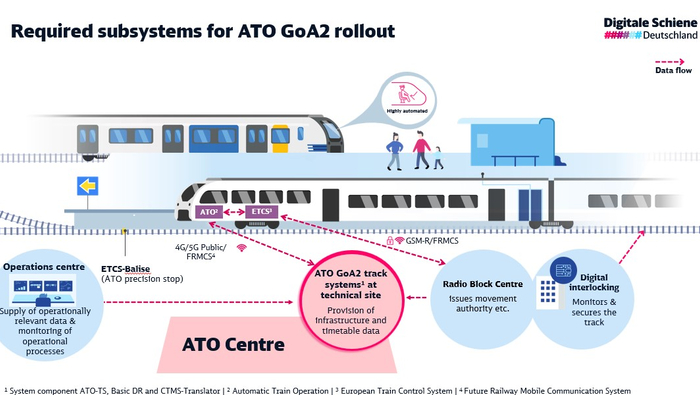
Calculation of driving profile
If a train is delayed, ATO runs at the maximum permitted speed, which is specified and monitored by ETCS. During scheduled operation, ATO specifies a driving profile that saves as much energy as possible. If a train is too early, ATO reduces the speed in order to return to the scheduled running profile; this also saves energy. ATO enables high-precision stops at platforms.
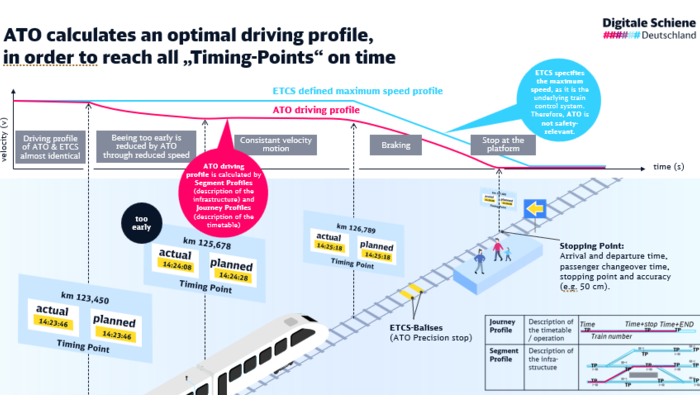
Videos
High-automated driving at the Digital Node Stuttgart
How does high-automated driving work in railway operations, and what technologies are specifically used? As part of the pilot project "High-automated Driving at the Digital Node Stuttgart," experts from DB InfraGO/Digitale Schiene Deutschland and other DB employees provide insights into the technical and operational implementation and the project's goals.
Specialist articles
-
The engineering process for infrastructure data in support of highly automated driving | November 2024
The newly defined ATO planning process will be used for the first time as part of the ATO GoA 2 rollout at the Stuttgart Digital Node. This article provides an overview of the Digitale Schiene
Deutschland (DSD) ATO GoA 2 system architecture, explains
the new ATO planning process and outlines the associated effects
on the sector.Source: SIGNAL+DRAHT
-
Digitalising the S-Bahn Stuttgart Core (part 1) | September 2023
With more than 900 trains per day, the double-track S-Bahn main line in Stuttgart is one of the busiest routes in Germany. After several years of discussion, design and planning, it is one of the first such lines in the world to be equipped with a digital interlocking system (DSTW), European Train Control System Level 2 without signals (ETCS L2oS) and Automatic Train Operation Grade of Automation 2 (ATO GoA 2).
Source: Signal + Draht
-
Digitalising the S-Bahn Stuttgart Core (part 2) | December 2023
The plans presented in SIGNAL+DRAHT 9/2023 for the digitalisation of the Stuttgart S-Bahn main line are now gradually becoming reality. This article focuses on experiences from the ongoing implementation, the operational and transport benefits and some optimisation potential. An outlook on the next steps rounds off the article.
Source: Signal + Draht
-
Innovative cooperation for the vehicle equipment at Stuttgart Digital Node | September 2022
Within the sector initiative Digitale Schiene Deutschland Alstom, Deutsche Bahn AG (DB) and the state of Baden-Württemberg are jointly breaking new ground for the retrofitting of 333 regional and commuter trains for the Stuttgart Digital Node (DKS). Four key topics for the digital rail operation of the future were jointly worked as part of an Innovation Cooperation and brought to implementation maturity. The resulting solutions are intended to serve as models for upcoming retrofit projects.
Source: Signal + Draht
-
Nachrüstung von 333 Triebzügen für den Digitalen Knoten Stuttgart | May 2022 (only German)
A total of 333 S-Bahn and regional multiple units are being retrofitted with the European Train Control System ETCS and other technologies for the Stuttgart Digital Node. For the first time in Germany, entire mainline railway fleets are being equipped with ETCS Level 3, ATO GoA 2 (Automatic Train Operation with the highly automated train operation level) and FRMCS (Future Railway Mobile Communication System).
Source: ZEVrail
-
Fahrzeugnachrüstung für den Digitalen Knoten Stuttgart | September 2021 (only German)
In order to equip 333 S-Bahn and regional multiple trains with ETCS and other technologies, the federal government, state, region, industry and DB are breaking new ground in many respects.
A first insight into a unique large-scale project.
Source: Der Eisenbahningenieur

